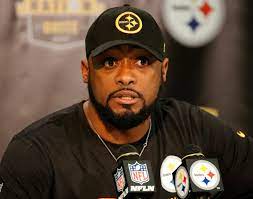PITTSBURGH — Pittsburgh Steelers head coach Mike Tomlin took swift offense this week at suggestions his team rushed injured players back into action, asserting that sound medical judgment, not pressure, guided those decisions.
The comments come in response to discussions around the return of quarterback Ben Roethlisberger and tight end Heath Miller during the playoff loss to Baltimore. Both players exited briefly with head‑neck concerns but returned within two to three plays. Critics questioned whether the franchise prioritized short‑term gain over safety.
Tomlin shot back, telling reporters, “I assure you the proper protocol was followed — that’s how we do business. I take offense to the assumption that we would put those guys in harm’s way.” He emphasized his trust in the medical staff and independent doctors, saying their evaluations met or exceeded league safety standards .
This is consistent with the NFL’s concussion protocols, which require neurological examinations and independent spotters before players can resume action. But Tomlin’s frustration reveals how seriously he takes public perceptions of player welfare — especially when it pertains to head trauma.
On that Saturday night, Roethlisberger described his symptoms as “more like whiplash,” believing he hadn’t suffered a concussion. Miller was also cleared quickly. Tomlin reiterated, “Proper protocol was followed. That’s how we do business,” reinforcing his confidence in the team’s medical team .
The Steelers ultimately fell to the Ravens 30‑17 in the wild-card round. Though the game was decided by performance and strategy, the return of key players from head‑neck checks sparked a debate about whether teams sometimes take risks to keep star players on the field.
By responding so forcefully, Tomlin put the spotlight back on his program’s medical integrity and safety-first philosophy. “We would not put those guys in harm’s way,” he added, striking a firm tone against doubters.
For now, Tomlin seems determined to close the door on reconsideration of past concussion decisions, instead reinforcing trust in the protocols and professionals guiding such returns.
